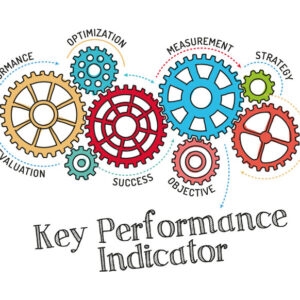The weekly status report is a workplace tradition. But are its days numbered? Like many established workplace rituals, what was once a beneficial record of progress has morphed into a time-sink — one that thousands of individuals and teams are asked to repeat every week.
It starts with manually culling information and updates from multiple team members, documents, and project plans. Next comes the inefficient process of reformatting this information into an unwieldy “template,” regardless of how ill-suited it might be for that purpose. Finally, it’s emailed up the chain of command with the hope that someone will read and act upon this information.
It’s easy to see how this endeavor can consume hours every week, along with an equal amount of time for its recipients to adequately absorb and process the information — hours that could have been used to produce substantive business value rather than a futile exercise “because it’s always been done this way.”
So why does the status report persist in workplace culture? At its heart, it helps with keeping track of goals and summarizing information to send up the management chain.
Tedious as it can be to compile and wade through status reports, the reports are also a familiar way of answering the fundamental questions managers have:
- Is a project progressing on schedule — or not?
- Who is responsible for each task?
- What is the next action step, and how many tasks are left to be completed?
- How much time/financial investment/human resources have been consumed to date and how much remains?
Today’s document- and presentation-based status reports frequently do summarize this information (that is, when the report creator can invest the requisite time).
But can a static document, often produced days in advance, accurately report the current status of a dynamic business in a rapidly shifting market? Not a chance.
The weekly status report quickly falls flat when up-to-the minute accurate information is needed to manage the business and quickly respond to new opportunities.
The traditional status report isn’t optimized for sharing down and across the chain of command, or for identifying opportunities to systematically improve the business and leverage a feedback loop.
So go ahead and dislike the status report because it’s frustrating and inefficient — but bid it a formal goodbye because it’s bad for business.
What, then, are better alternatives, considering that the needs of management to be fully and accurately briefed aren’t going away?
Live in the “now,” not in the week
The weekly status report is dead, but that doesn’t mean the need for status information is gone. It’s simply shifted to “continual” rather than weekly.
Consider the information sources of your status updates, such as internal collaboration and task management platforms. Are those systems and processes already communicating status as a task is completed or a project moves to the next state? If so, repeating that information in a status report may not be necessary (and will quickly become obsolete). Ready access to this information in a shared technology framework leads to faster decisions and fewer missed opportunities.
Report status where it lives
Consider using your project management infrastructure to report status. Many of the sources you might access for creating a status report exist as trackable project components.
Rather than spending time extracting that source information and reformatting into a static document, search out infrastructure that will summarize those updates and connect to email systems, enterprise messaging, and other collaboration platforms that make it easy to automatically communicate those updates to your team.
Prevent information overload
Frequent information updates might be good individually, but taken together they can generate a paralyzing quantity of email alerts. Remember, the status report was invented to help summarize information for overloaded managers.
Having tools that both support an overall view of a project’s time and cost progression as well as drill down into individual components benefits everyone: managers can view summary data while individual contributors can access the details necessary to track their work.
Don’t broadcast status, dialog it
The traditional status report effectively broadcasts updates to its readers, but does little to facilitate and track the feedback necessary to create a dynamic, learning organization that can tune its processes and performance over time.
Modern collaboration platforms enable not only transparency and accountability by facilitating information sharing, but also enable a two-way dialog so team members can respond to status updates, make recommendations, and highlight opportunities for improvement in real time.
The weekly status report may not go quietly. Creating a culture of instant information, constant learning and inclusive participation will require tuning, particularly when it comes to the human behavior impacts. Choosing well-designed collaboration and project management technologies can greatly simplify the transition. Organizations that are able to leverage this new way of reporting will find that they gain the agility to capitalize on new opportunities and outmaneuver their competitors — and to finally move beyond the weekly status report.
Additional resources:
PMI Pulse Impact of PMOs on Strategy Implementation
Organizational Agility In-Depth Report
Business & Finance Articles on Business 2 Community
(83)







